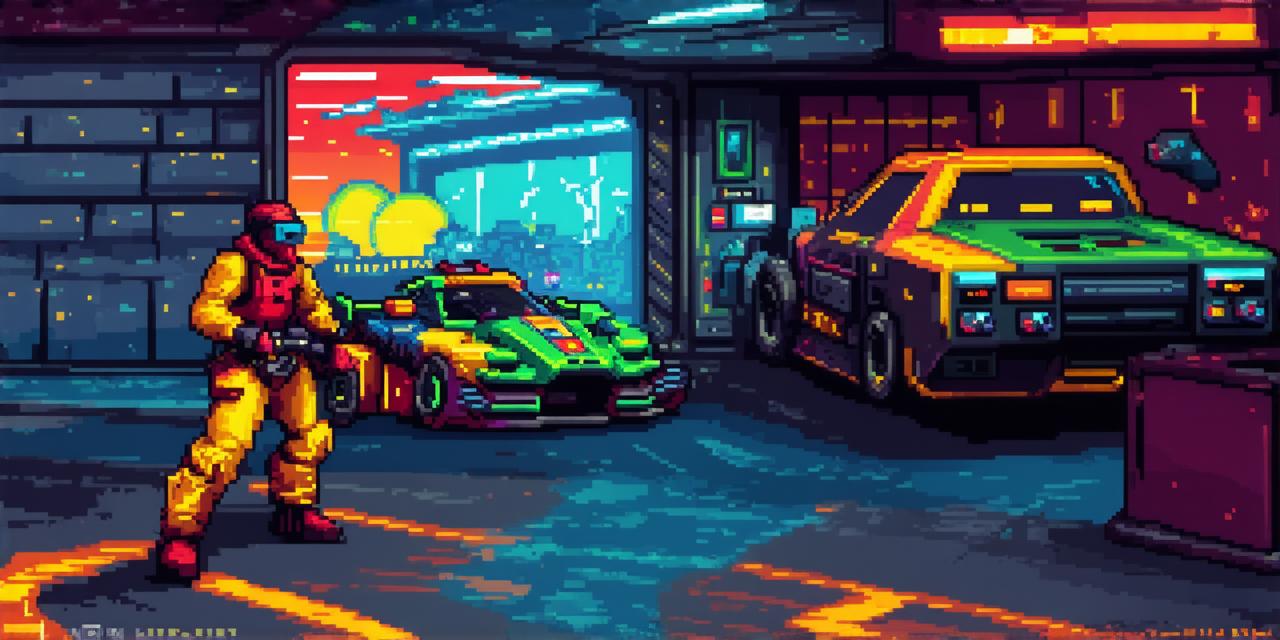As technology continues to evolve, video games have become an increasingly popular form of entertainment. From simple pixelated affairs to complex, immersive experiences, games have captured the imaginations of people all over the world. But what goes on behind the scenes of these digital worlds? How do developers create and maintain the intricate systems that power them? In this article, we will take a closer look at the inner workings of video games, exploring everything from programming and art to sound design and user experience.
Programming: The Foundation of Any Game
At the heart of every video game is code. Developers use a variety of programming languages, including C++, Java, and Python, to create the rules and systems that govern how players interact with the game world. This includes everything from movement and combat to physics and AI behavior.
One of the most important aspects of game programming is optimization. With so many variables at play, even small improvements in performance can make a huge difference in how the game feels. For example, reducing load times or minimizing stuttering can greatly enhance the overall experience for players.
This requires a deep understanding of computer architecture and algorithms, as well as a keen eye for detail.
Art: Bringing the Game to Life
While programming is the backbone of any game, art is what brings it to life. From character design to environment modeling, artists play a crucial role in shaping the visual identity of a game.
This includes everything from concept art and storyboards to 3D models and textures.
One of the most important aspects of game art is consistency. A consistent visual style helps to create a cohesive world that players can easily immerse themselves in. This requires careful attention to detail, as well as an understanding of color theory and composition. In addition, artists must also be able to work within the constraints of the game engine, ensuring that their designs are optimized for performance.
Sound Design: The Unseen Side of Gaming
While visuals may be the most obvious aspect of a video game, sound design is just as important. From ambient noise and music to sound effects and voice acting, sound designers play a crucial role in setting the tone and atmosphere of a game.
This requires a deep understanding of audio production and composition, as well as an ability to work within the constraints of the game engine.
One of the most important aspects of sound design is balance. A poorly balanced soundscape can be incredibly distracting, taking players out of the immersion and detracting from the overall experience. This requires careful attention to detail, as well as an understanding of how different sounds interact with one another. In addition, sound designers must also be able to work within the constraints of the game engine, ensuring that their designs are optimized for performance.
User Experience: The Ultimate Goal
Ultimately, the goal of any video game is to provide an engaging and enjoyable experience for players. This requires a deep understanding of user psychology and behavior, as well as an ability to design systems and interfaces that are intuitive and easy to use.
In addition, developers must also be able to iterate and refine based on player feedback, making constant adjustments to ensure the game remains engaging and fun.
One of the most important aspects of user experience is accessibility. A game that is too difficult or confusing can quickly become frustrating for players, leading to disengagement and abandonment. This requires careful consideration of difficulty levels and tutorials, as well as an understanding of how different users may interact with the game. In addition, developers must also be able to make their games accessible to a wide range of audiences, including those with disabilities or limited technological resources.

